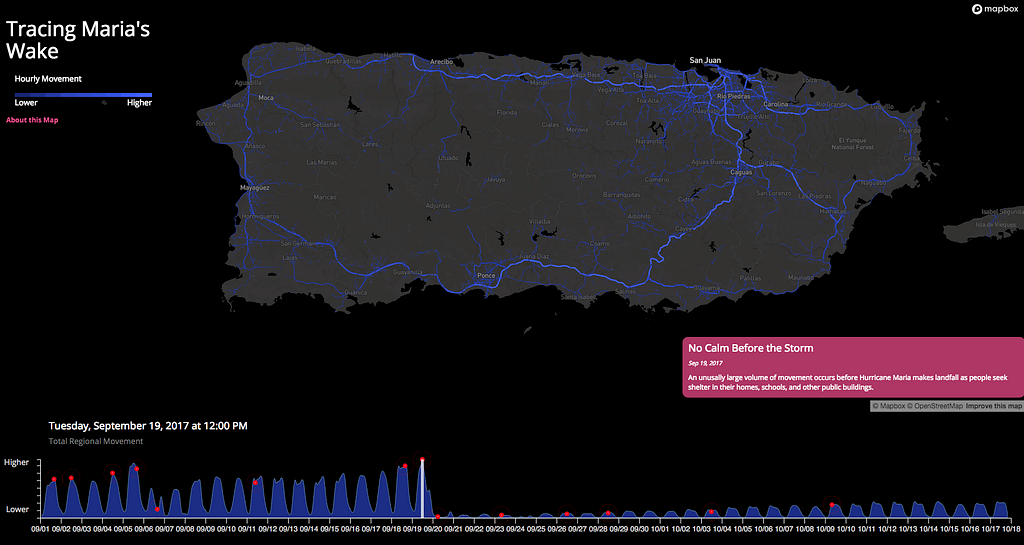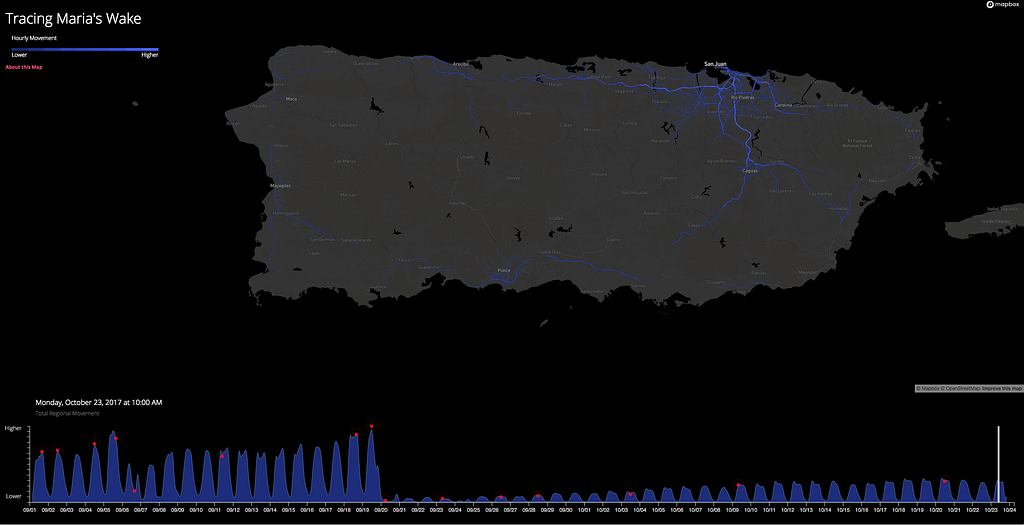By: Scott Farley
It has been over a month since Hurricane Maria made landfall on the island of Puerto Rico, destroying critical infrastructure and leaving millions of Americans without power, roads, or clean water. Anonymized data from our traffic sensor network gives a unique insight into the humanitarian crisis by revealing patterns in the mobility and connectivity of the island’s residents. These patterns allow us to understand how a city moves in everyday life, and in the wake of a disaster, it can also show us where it is hurt most.
Prior to the hurricane, regional movement patterns reveal the pulse of the city — how it ebbs and flows through the day as people commute to work, travel home for dinner, or relax on the weekend. After Maria, lack of electricity, communication networks, and driveable roads make recovery slow; even three weeks after the storm, regional mobility is primarily limited to the capital city of San Juan and is only at a fraction of pre-storm levels. Take a look at the movement in the video below or explore it for yourself in our full-screen map.
The day before the storm you can see a large volume of movement throughout the island as people prepare to seek shelter in their homes, schools, or public buildings:

On September 20th, Hurricane Maria made landfall at 6:15 am. Movement across the island was minimal as some parts of the territory received over 30 inches of rain in a single day:

35 days have passed since Maria made landfall. And yet, the region has only returned to 27% mobility, with most movement in the city of San Juan. To put this in perspective, after the previous hurricane, we saw a return to normal activity in about two days.

The data leaves open as many questions as it answers. We’re not sure if areas are coming online at different rates to due to electricity, connectivity, damage to road infrastructure, or all of the above. What we can see clearly is that recovery has been slow and the road to life as it was will be long.
If you’re looking for a way to help those affected by the hurricane, please consider donating to the UNIDOS Disaster Relief and Recovery Program.
Tracing Hurricane Maria’s wake was originally published in Points of interest on Medium, where people are continuing the conversation by highlighting and responding to this story.